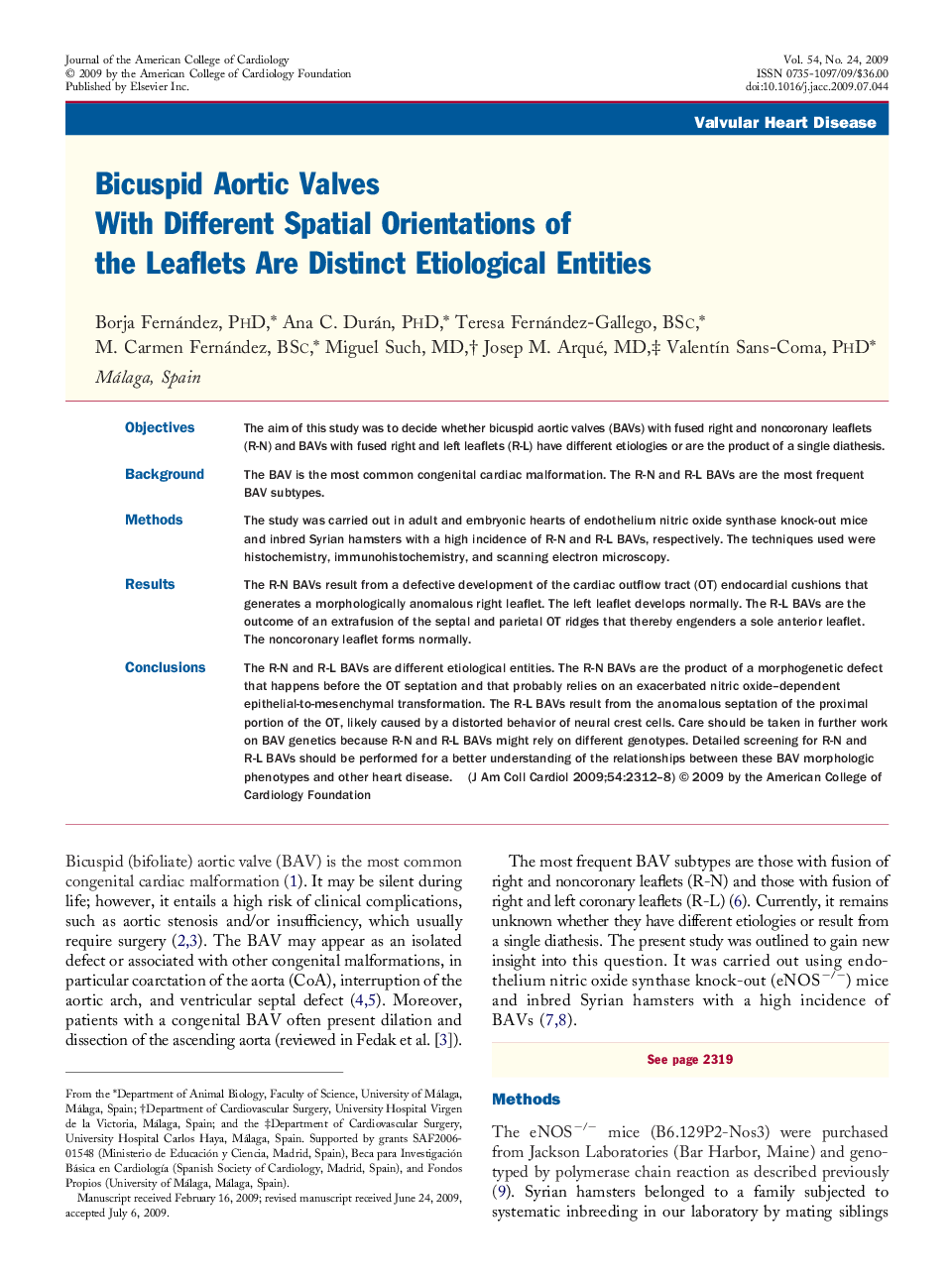| Article ID | Journal | Published Year | Pages | File Type |
|---|---|---|---|---|
| 2950415 | Journal of the American College of Cardiology | 2009 | 7 Pages |
ObjectivesThe aim of this study was to decide whether bicuspid aortic valves (BAVs) with fused right and noncoronary leaflets (R-N) and BAVs with fused right and left leaflets (R-L) have different etiologies or are the product of a single diathesis.BackgroundThe BAV is the most common congenital cardiac malformation. The R-N and R-L BAVs are the most frequent BAV subtypes.MethodsThe study was carried out in adult and embryonic hearts of endothelium nitric oxide synthase knock-out mice and inbred Syrian hamsters with a high incidence of R-N and R-L BAVs, respectively. The techniques used were histochemistry, immunohistochemistry, and scanning electron microscopy.ResultsThe R-N BAVs result from a defective development of the cardiac outflow tract (OT) endocardial cushions that generates a morphologically anomalous right leaflet. The left leaflet develops normally. The R-L BAVs are the outcome of an extrafusion of the septal and parietal OT ridges that thereby engenders a sole anterior leaflet. The noncoronary leaflet forms normally.ConclusionsThe R-N and R-L BAVs are different etiological entities. The R-N BAVs are the product of a morphogenetic defect that happens before the OT septation and that probably relies on an exacerbated nitric oxide–dependent epithelial-to-mesenchymal transformation. The R-L BAVs result from the anomalous septation of the proximal portion of the OT, likely caused by a distorted behavior of neural crest cells. Care should be taken in further work on BAV genetics because R-N and R-L BAVs might rely on different genotypes. Detailed screening for R-N and R-L BAVs should be performed for a better understanding of the relationships between these BAV morphologic phenotypes and other heart disease.
